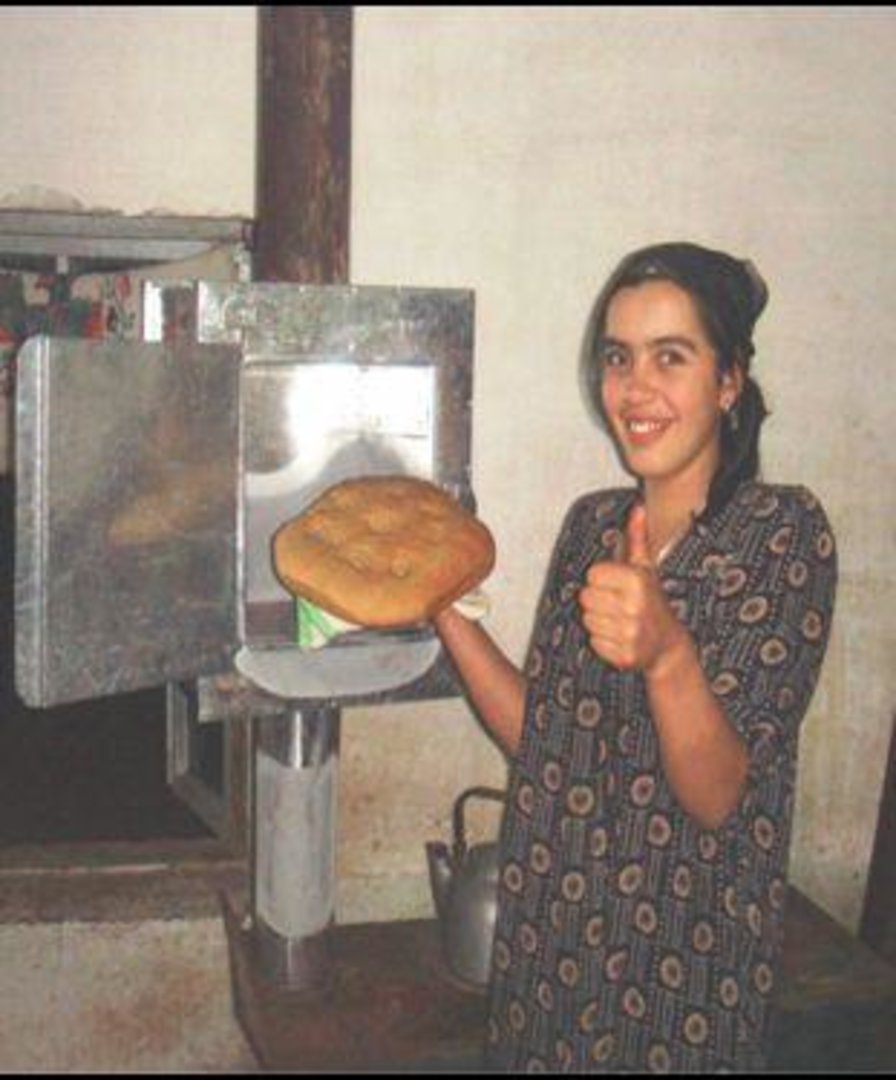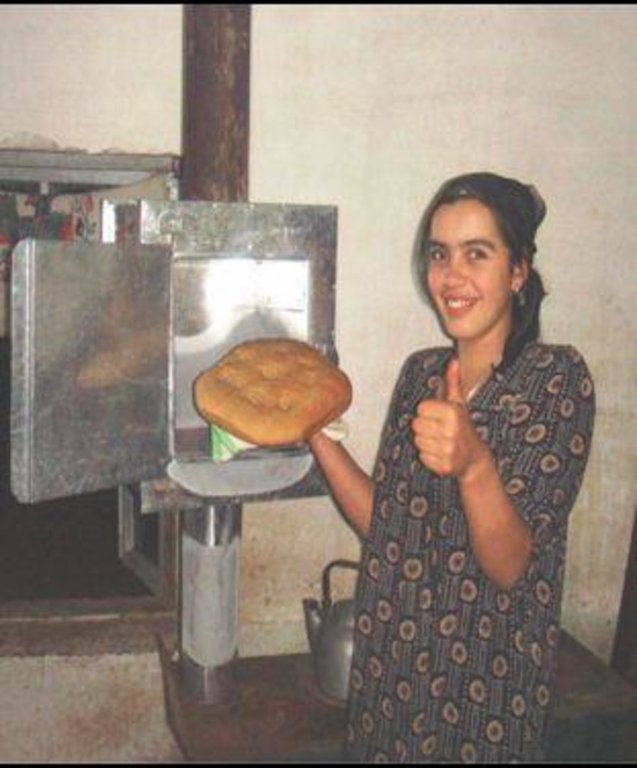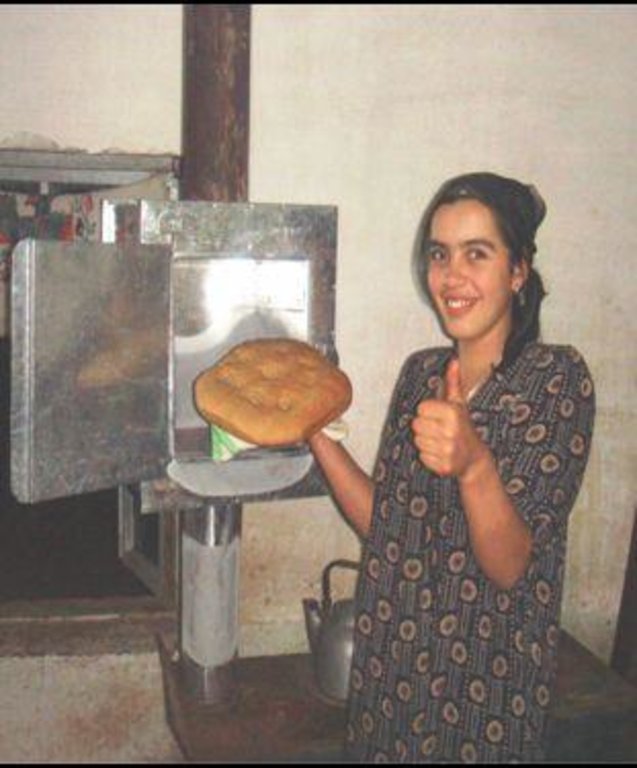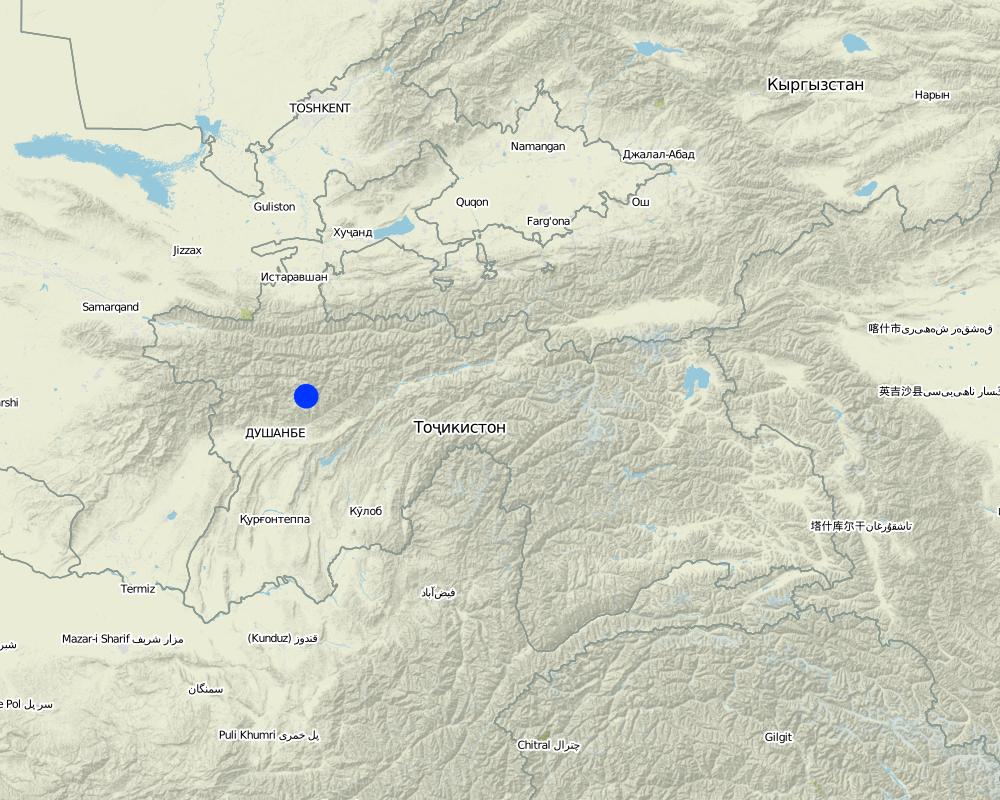Energy efficiency measures to increase the application of organic fertilisers. [塔吉克斯坦]
- 创建:
- 更新:
- 编制者: Daler Domullojonov
- 编辑者: –
- 审查者: Laura Ebneter, Alexandra Gavilano, Fabian Ottiger
Бехтар намудани хосилнокии замин ба воситаи амалигардонии чорахои самаранокии истифодабарии неру
technologies_1050 - 塔吉克斯坦
- Energy efficiency measures to increase the application of organic fertilisers.: Nov. 2, 2021 (public)
- Energy efficiency measures to increase the application of organic fertilisers.: Aug. 14, 2019 (inactive)
- Energy efficiency measures to increase the application of organic fertilisers.: July 21, 2017 (inactive)
- Energy efficiency measures to increase the application of organic fertilisers.: June 2, 2017 (inactive)
- Energy efficiency measures to increase the application of organic fertilisers.: May 31, 2017 (inactive)
- Energy efficiency measures to increase the application of organic fertilisers.: Dec. 27, 2016 (inactive)
查看章节
全部展开 全部收起1. 一般信息
1.2 参与该技术评估和文件编制的资源人员和机构的联系方式
关键资源人
SLM专业人员:
Hafizova Tahmina
Welthungerhilfe
德国
SLM专业人员:
Olimov Nazarmad
Welthungerhilfe
德国
有助于对技术进行记录/评估的机构名称(如相关)
Deutsche Welthungerhilfe e. V. (Welthungerhilfe) - 塔吉克斯坦1.3 关于使用通过WOCAT记录的数据的条件
(现场)数据是什么时候汇编的?:
30/04/2011
编制者和关键资源人员接受有关使用通过WOCAT记录数据的条件。:
是
2. SLM技术的说明
2.1 技术简介
技术定义:
The implementation of several low cost energy efficiency measures to reduce the amount of organic material used as fuel within rural households.
2.2 技术的详细说明
说明:
In many cases local inhabitants of rural areas depend heavily on locally available natural resources, contributing to, and accelerating deforestation. As a low cost fuel source, local households often use cow-dung and wood. Taking these from the local area contributes to decreased soil fertility and erosion processes. Most of the dung collected from livestock is burnt in a very inefficient manner for cooking, baking and heating purposes. Based upon assessments by Welthungerhilfe in 600 households (HH) who were using cow dung as the only fuel material, on average one HH uses 4.6 tons of cow dung annually when using traditional cooking stoves, 6 tons for heating and 4.5 tons for bread baking. This means almost 15.1 tons of cow dung is burnt annually per HH.
Using a simple modification of the traditional cooking stove, approximately 50 - 60% or 2.3 tons of fuel material can be saved. This saving can be further increased by the utilisation of a pressure cooker that decreases the cooking time by 50%. Not all local hot meals can be cooked with a pressure cooker but it can contribute to an additional saving of 0.7 ton of organic matter.
The introduction of a metal heat exchanger on the exhaust pipe of a cast iron stove can help save a household 3 tons of fuel material per year, the effectiveness can be further increased by the incorporation of bread baking compartment.
Further savings can be made by using straw, mud and wood to improve the thermal insulation of the exterior walls, ceiling and floor in the house.
Through the integration of all above measures approx 60% of the current usage rates of organic material used for fuel can be saved. In addition it will keep the house warmer for longer, reduce the smoke in the air, and help retain organic material in the soil.
Purpose of the Technology: The main objective of the energy efficiency technology is to address one of the root causes of the deforestation process and to improve soil fertility i.e. to decrease the demand from the local population for organic fuel. This project used a range of technologies to address this issue which in combination provided substantial savings in organic fuel.
Establishment / maintenance activities and inputs: Cooking stoves: For centuries local populations have been using traditional cooking stoves for cooking, especially during the warm seasons of the year. These were made from a mixture of mud and straw. The modification of these involves improving the aeration process during the burning of the fuel. This is achieved by putting a metallic cover with one inflow cutting and six small smoke outflow holes surrounding the cooking pot. The only input needed which is not locally available is the metallic cover.
Pressure cookers: As maintenance is required 1-2 times per season to keep the cooking stove functioning efficiently, the utilisation of pressure cookers can be easily integrated with the modified cooking stoves.
Heat exchangers: The heat exchangers installed on top of the iron ovens, can be produced by local tradesmen and need to be cleaned every 1-2 months. They have to be installed before the start of the winter season when the heating is needed.
House installation: The house insulation, using locally available materials does not need maintenance once it is installed. However, the storage of dry fruits or bread in the attic should be avoided as it could attract mice which can destroy the insulation.
Welhungerhilfe provided subsidies for all the above work, except for the heat exchangers.
Natural / human environment: The geographical area served by the project is mainly hill slopes, covered in low grade pasture fodder with wheat crops planted in loess soil. Although the soils have the potential to be very fertile, they are overused and not well managed and thus have become degraded and denuded. One of the main contributing factors to this is the removal of organic material from the biomass cycle. Trees, bushes and organic material is cut and collected to be used as fuel.
The main source of income in the area is from semi-subsistence farming, and the removal of organic material has a significant impact on their crops and livestock.
The houses are made from concrete foundations and mud bricks, these and the current stoves are all energy inefficient and fail to retain heat.
2.3 技术照片
2.5 已应用该技术的、本评估所涵盖的国家/地区/地点
国家:
塔吉克斯坦
区域/州/省:
Tajikistan / Khatlon
有关地点的进一步说明:
Temurmalik . Davad
Map
×2.6 实施日期
如果不知道确切的年份,请说明大概的日期:
- 不到10年前(最近)
2.7 技术介绍
详细说明该技术是如何引入的:
- 通过项目/外部干预
注释(项目类型等):
Promotion of energy efficiency measures began in 2007 by Welthungerhilfe projects
3. SLM技术的分类
3.2 应用该技术的当前土地利用类型

定居点、基础设施
注释:
Major land use problems (compiler’s opinion): The land in rural Tajikistan is becomming denuded due to the pressure for organic fertilisers used as a source of fuel for heating and cooking. This impacts on soil quailty, yields and soil stability. This issue is compounded by the relatively high price of mineral fertilisers.
Major land use problems (land users’ perception): Crop yields decrease.
3.3 有关土地利用的更多信息
每年的生长季节数:
- 1
具体说明:
Longest growing period in days: 220Longest growing period from month to month: march - october
3.5 技术传播
具体说明该技术的分布:
- 均匀地分布在一个区域
如果该技术均匀地分布在一个区域上,请注明覆盖的大致区域。:
- > 10,000 平方千米
注释:
Several energy efficiency measures were implemented by households in three neighbouring districts; Baljuvon, Temurmalik and Khovaling. These included the following: cooking stoves were modified in 1,924 HHs (households), pressure cookers were used in 132 HHS, heat exchangers were used in 569 HHs, improved house insulation in 850 HHs, and group bread baking - 10 groups (average of 10 families in each group).
3.6 包含该技术的可持续土地管理措施

农艺措施
- A2:有机质/土壤肥力

结构措施
- S11:其它
注释:
Main measures: structural measures
3.7 该技术强调的主要土地退化类型

化学性土壤退化
- Cn:肥力下降和有机质含量下降(非侵蚀所致)

物理性土壤退化
- Pc:压实
注释:
Main type of degradation addressed: Cn: fertility decline and reduced organic matter content
Secondary types of degradation addressed: Pc: compaction
Main causes of degradation: soil management (poor ploughing practices), deforestation / removal of natural vegetation (incl. forest fires) (deforestation), over-exploitation of vegetation for domestic use (removal of trees and bushes for fuel pruposes.), overgrazing (imbalance of carrying capacity and size of livestock herds.), disturbance of water cycle (infiltration / runoff) (reduced infiltration capacity.), poverty / wealth (local population have restricted funds)
Secondary causes of degradation: crop management (annual, perennial, tree/shrub) (monoculture), change of seasonal rainfall (more intensive heavy rainfall events), droughts (events occuring more frequently), population pressure (population is increasing), labour availability (external labour migration)
3.8 防止、减少或恢复土地退化
具体数量名该技术与土地退化有关的目标:
- 防止土地退化
- 减少土地退化
注释:
Main goals: prevention of land degradation
Secondary goals: mitigation / reduction of land degradation
4. 技术规范、实施活动、投入和成本
4.1 该技术的技术图纸
作者:
Daler Domullojonov, 14, Giprozem street, app. 27, Dushanbe, Tajikistan
4.2 技术规范/技术图纸说明
Heat exchanger adopted by Welthungerhilfe, promoted in communities of the Khatlon region of Tajikistan.
Location: Temurmalik, Baljuvon and Khovaling districts. Khatlon region / Tajikistan
Date: September, 2009
Technical knowledge required for field staff / advisors: high (promotion of EE measures)
Technical knowledge required for land users: moderate (cooking stove modification and use of pressure cookers, mainly by females)
Technical knowledge required for Local masters: high (for construction of heat exchangers and improving house thermal insulation)
Main technical functions: increase in organic matter
Secondary technical functions: improvement of topsoil structure (compaction), increase of infiltration, increase of biomass (quantity)
Structural measure: cook stove
Structural measure: House insulation
Structural measure: Presure cooker
Structural measure: Heat exchanger
4.3 有关投入和成本计算的一般信息
其它/国家货币(具体说明):
TJS
注明美元与当地货币的汇率(如相关):1美元=:
4.5
注明雇用劳工的每日平均工资成本:
11.00
4.4 技术建立活动
| 活动 | 措施类型 | 时间 | |
|---|---|---|---|
| 1. | Cook stove modification | 结构性的 | any |
| 2. | Pressure cooker | 结构性的 | any |
| 3. | House insulation | 结构性的 | once in the beginning |
| 4. | heat exchanger | 结构性的 | once in the beginning |
4.5 技术建立所需要的费用和投入
| 对投入进行具体说明 | 单位 | 数量 | 单位成本 | 每项投入的总成本 | 土地使用者承担的成本% | |
|---|---|---|---|---|---|---|
| 劳动力 | Labour | per stove | 1.0 | 5.5 | 5.5 | 100.0 |
| 劳动力 | Labour | per room | 1.0 | 37.8 | 37.8 | 100.0 |
| 植物材料 | Wheat straw | bales | 12.0 | 4.9 | 58.8 | 100.0 |
| 施工材料 | Metallic cover | per stove | 1.0 | 5.1 | 5.1 | 34.0 |
| 施工材料 | Earth | per stove | 1.0 | 0.5 | 0.5 | 100.0 |
| 施工材料 | Wooden lath | per room | 1.0 | 72.0 | 72.0 | 15.0 |
| 施工材料 | Nail, lime, brush, emalen | per room | 1.0 | 30.75 | 30.75 | 100.0 |
| 施工材料 | Veneer and glueing silicone | per room | 1.0 | 43.8 | 43.8 | 100.0 |
| 其它 | Pressure cooker | piece | 1.0 | 22.2 | 22.2 | 80.0 |
| 其它 | heat exchanger | per stove | 1.0 | 30.0 | 30.0 | 100.0 |
| 其它 | Transportation cost | 1.0 | 44.0 | 44.0 | 100.0 | |
| 技术建立所需总成本 | 350.45 | |||||
注释:
Duration of establishment phase: 12 month(s)
4.6 维护/经常性活动
| 活动 | 措施类型 | 时间/频率 | |
|---|---|---|---|
| 1. | adjustment of modified cook stove | 结构性的 | twice per year |
| 2. | cleaning of heat exchanger | 结构性的 | twice per year |
4.7 维护/经常性活动所需要的费用和投入(每年)
| 对投入进行具体说明 | 单位 | 数量 | 单位成本 | 每项投入的总成本 | 土地使用者承担的成本% | |
|---|---|---|---|---|---|---|
| 劳动力 | Labour | per stove | 1.0 | 3.3 | 3.3 | 100.0 |
| 技术维护所需总成本 | 3.3 | |||||
注释:
Machinery/ tools: brush
The costs are based upon 2010 prices.
4.8 影响成本的最重要因素
描述影响成本的最决定性因素:
The price of the construction materials are dependent on many different external factors, and prices are generally increasing seasonally and annually.
5. 自然和人文环境
5.1 气候
年降雨量
- < 250毫米
- 251-500毫米
- 501-750毫米
- 751-1,000毫米
- 1,001-1,500毫米
- 1,501-2,000毫米
- 2,001-3,000毫米
- 3,001-4,000毫米
- > 4,000毫米
农业气候带
- 半干旱
Thermal climate class: temperate. 3 months below 5 degrees, 7 months above 10 degrees
5.2 地形
平均坡度:
- 水平(0-2%)
- 缓降(3-5%)
- 平缓(6-10%)
- 滚坡(11-15%)
- 崎岖(16-30%)
- 陡峭(31-60%)
- 非常陡峭(>60%)
地形:
- 高原/平原
- 山脊
- 山坡
- 山地斜坡
- 麓坡
- 谷底
垂直分布带:
- 0-100 m a.s.l.
- 101-500 m a.s.l.
- 501-1,000 m a.s.l.
- 1,001-1,500 m a.s.l.
- 1,501-2,000 m a.s.l.
- 2,001-2,500 m a.s.l.
- 2,501-3,000 m a.s.l.
- 3,001-4,000 m a.s.l.
- > 4,000 m a.s.l.
5.3 土壤
平均土层深度:
- 非常浅(0-20厘米)
- 浅(21-50厘米)
- 中等深度(51-80厘米)
- 深(81-120厘米)
- 非常深(> 120厘米)
土壤质地(表土):
- 中粒(壤土、粉土)
表土有机质:
- 中(1-3%)
5.4 水资源可用性和质量
地下水位表:
> 50米
地表水的可用性:
中等
水质(未处理):
不可用
5.5 生物多样性
关于生物多样性的注释和进一步规范:
Species diversity: medium, low
5.6 应用该技术的土地使用者的特征
非农收入:
- 收入的10-50%
相对财富水平:
- 非常贫瘠
- 贫瘠
个人或集体:
- 个人/家庭
性别:
- 女人
- 男人
说明土地使用者的其他有关特征:
Land users applying the Technology are mainly common / average land users
Population density: 10-50 persons/km2
Annual population growth: 1% - 2%
90% of the land users are poor.
10% of the land users are poor.
Off-farm income specification: local inhabitants are in many cases dependent on remittances from Russia and other income generating activities.
5.7 应用该技术的土地使用者拥有或租用的平均土地面积
- < 0.5 公顷
- 0.5-1 公顷
- 1-2 公顷
- 2-5公顷
- 5-15公顷
- 15-50公顷
- 50-100公顷
- 100-500公顷
- 500-1,000公顷
- 1,000-10,000公顷
- > 10,000公顷
这被认为是小规模、中规模还是大规模的(参照当地实际情况)?:
- 小规模的
5.8 土地所有权、土地使用权和水使用权
土地所有权:
- 州
注释:
There are a variety of land user and water rights within the three districts, but they do not directly affect the implementation of the technologies.
5.9 进入服务和基础设施的通道
健康:
- 贫瘠
- 适度的
- 好
教育:
- 贫瘠
- 适度的
- 好
技术援助:
- 贫瘠
- 适度的
- 好
就业(例如非农):
- 贫瘠
- 适度的
- 好
市场:
- 贫瘠
- 适度的
- 好
能源:
- 贫瘠
- 适度的
- 好
道路和交通:
- 贫瘠
- 适度的
- 好
饮用水和卫生设施:
- 贫瘠
- 适度的
- 好
金融服务:
- 贫瘠
- 适度的
- 好
6. 影响和结论性说明
6.1 该技术的现场影响
社会经济效应
生产
作物生产
SLM之前的数量:
12 t/ha
SLM之后的数量:
21 t/ ha
生产故障风险
收入和成本
农业投入费用
农业收入
SLM之前的数量:
TJS 100
SLM之后的数量:
TJS 1200
社会文化影响
食品安全/自给自足
健康状况
冲突缓解
生态影响
土壤
土壤流失
土壤压实
生物多样性:植被、动物
生物量/地上C
其它生态影响
reduce fuel costs
warmer houses, health benefits
pressure cooker
注释/具体说明:
Not possible to cook all meals in this
6.3 技术对渐变气候以及与气候相关的极端情况/灾害的暴露和敏感性(土地使用者认为的极端情况/灾害)
渐变气候
渐变气候
| 季节 | 气候变化/极端天气的类型 | 该技术是如何应对的? | |
|---|---|---|---|
| 年温度 | 增加 | 好 |
气候有关的极端情况(灾害)
气象灾害
| 该技术是如何应对的? | |
|---|---|
| 局地暴雨 | 未知 |
| 局地风暴 | 未知 |
气候灾害
| 该技术是如何应对的? | |
|---|---|
| 干旱 | 好 |
水文灾害
| 该技术是如何应对的? | |
|---|---|
| 比较和缓的(河道)洪水 | 未知 |
其他气候相关的后果
其他气候相关的后果
| 该技术是如何应对的? | |
|---|---|
| 缩短生长期 | 好 |
注释:
The thermal could be modified to increase its thermal properties.
6.4 成本效益分析
技术收益与技术建立成本相比如何(从土地使用者的角度看)?
短期回报:
积极
长期回报:
非常积极
技术收益与技术维护成本/经常性成本相比如何(从土地使用者的角度看)?
短期回报:
非常积极
长期回报:
非常积极
注释:
As it uses mainly locally available materials, it is a low cost approach which increases energy efficiency and improves resource use.
6.5 技术采用
注释:
70% of land user families have adopted the Technology with external material support
1355 land user families have adopted the Technology with external material support
Comments on acceptance with external material support: The amount of the local's contribution to the project themselves was between 52.7% to 100%.
30% of land user families have adopted the Technology without any external material support
569 land user families have adopted the Technology without any external material support
Comments on spontaneous adoption: Fitting heat exchangers, adapting cooking stoves, and improving house thermal insulation are the main forms of technology that have been replicated in the above households.
There is a little trend towards spontaneous adoption of the Technology
Comments on adoption trend: This is restricted due to limited access to funds.
6.7 该技术的优点/长处/机会
| 土地使用者眼中的长处/优势/机会 |
|---|
|
It is very affordable How can they be sustained / enhanced? By involving local relevant authorities and departments |
| It saves and minimises expenditures for electricity, gas, and firewood procurement |
| The rooms are warmer and I can cook bread inside and save more fuel. |
| 编制者或其他关键资源人员认为的长处/优势/机会 |
|---|
|
It is a low cost measure using locally available materials. The heat exchanger can improve the heating capacity of the room threefold, for example. How can they be sustained / enhanced? replication rates could be increased through promotion to larger audiences with support of local authorities or by law. |
|
It is environmental friendly and increases the amount of organic material that stays within the soil. How can they be sustained / enhanced? There could be further awareness raising of the benefits of keeping organic materials in the soil. |
| It saves time for collecting fire material wood and cow dung. |
| It presents an opportunity to increase land productivity through application of organic fertilisers |
|
The technologies do not have a large initial financial cost and can be implemented progressively as funds become available. How can they be sustained / enhanced? Training of more local teachers to provide demonstrations to the community. |
6.8 技术的弱点/缺点/风险及其克服方法
| 土地使用者认为的弱点/缺点/风险 | 如何克服它们? |
|---|---|
| More labour needed to cut fuel into smaller pieces | Behavioural change |
| 编制者或其他关键资源人员认为的弱点/缺点/风险 | 如何克服它们? |
|---|---|
| Not all meals can be cooked in a pressure cooker | |
| Heat exchangers can get very hot for cooking purposes |
7. 参考和链接
7.2 参考可用出版物
标题、作者、年份、ISBN:
Brochure "Soil improvement starts with efficient cook stoves! low cost options to increase energy efficiency in Southern Tajikistan"
可以从哪里获得?成本如何?
Weltgungerhilfe projects in Khatlon region, Temurmalik district
标题、作者、年份、ISBN:
Welthungerhilfe project final narrative report (144-912)
可以从哪里获得?成本如何?
Weltgungerhilfe projects in Khatlon region, Temurmalik district
链接和模块
全部展开 全部收起链接
无链接
模块
无模块






